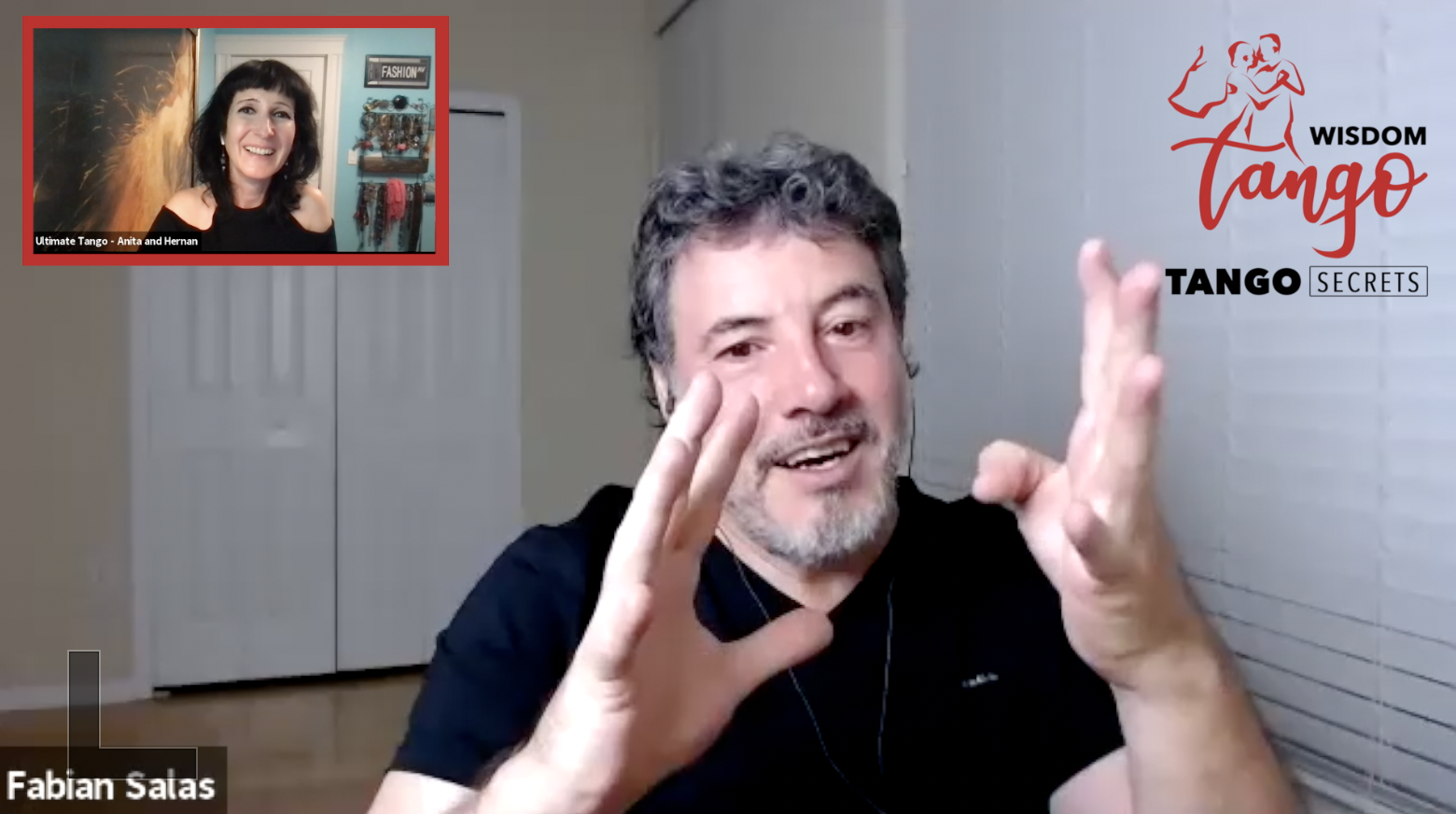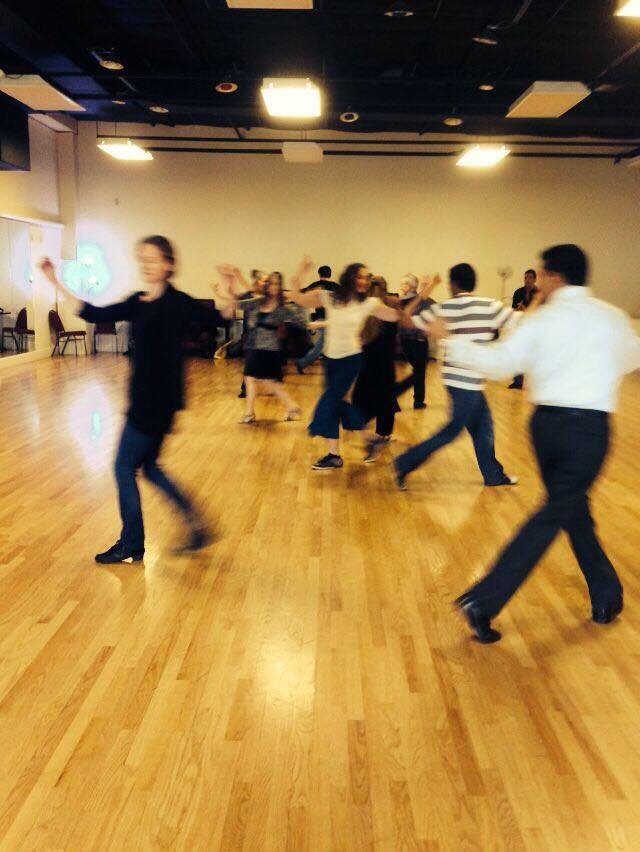Why Is Gustavo Naveira Considered a Godfather of Argentine Tango?
Argentine tango has had a long history since its conception in the late 1880s in the ports of Buenos Aires. As such, it is a dance that has mostly been taught through tradition.
Argentine Tango is a dance that has mostly been taught through tradition.
In a way, how tango was taught brings to mind how old stories were kept alive: through oral tradition. Much like these old stories, Tango had not had a formal written form of instruction for close to a century. Until some semblance of the structure appeared around the 1940s and 1950s, teaching and learning about tango rarely took up a systematized configuration that both students and teachers could use to process and impart its elements in a methodical way.
Gustavo Naveira was one of the first to ask whether such an intuitive, improvisational dance could be grasped using a more logical approach.
Gustavo Naveira: A Brief Introduction
“It is very easy to say, ‘tango is a feeling,’ because no one really knows what a feeling is,” explains Naveira in the highly insightful documentary produced by The Argentine Tango Society.
“[Tango as a feeling] is difficult to grasp or hold onto. You say, ‘the foot has to be straight’ or ‘the foot has to be opened.’ That is clearly established — you have to place the foot, and you see the foot. The ‘feeling,’ the ‘energy,’ the ‘passion,’ all those things are difficult to understand.”
In the quote above, Naveira — a tango dancer and teacher for over 35 years, widely credited for the “Tango Nuevo” or “New Tango” movement — aptly summarizes what may have been the primary reason that Argentine tango has existed without a structural form. The dance itself did not begin with a systematized approach.
On the contrary, Argentine tango is a dance deeply intertwined with concepts like those that Naveira mentioned: feelings, passion, and energy. The tango code, the code of walking, and other such ideas did not exist for the old-fashioned milonguero in a way that is outside the realm of intuition. This is what makes tango a unique dance, but also one that seems to be less accessible to others.
Naveira elaborates in the documentary: “Tango, in the old days, had a lot of loose things, which began to integrate into a whole during the ‘40s and ‘50s. It is there where what we call today ‘the structure’ appears.”
Gustavo Naveira and Giselle Anne at Ultimate Tango School of Dance
Naveira and the Development of Tango
Steeped in the life of tango at an early age, thanks to his father, Gustavo Naveira began to study the dance in his twenties, with his first teachers being Rodolfo Dinzel and his wife Gloria. At that point, Naveira saw the crucial development of tango after 1980. The 1980s were considered a turning point for tango in Buenos Aires as the changing political situation in Argentina contributed to the flood of students who wanted to learn the Argentine tango.
In his interview with Dance of the Heart, Naveira recounts:
“There was something very important for the development of tango that happened at this point, relative to the political situation in Argentina. Yes, democracy returned to the government in 1983, but the military dictatorship was not the reason that tango had been dying out as a social dance — even in the Golden Age of tango, we had [Juan] Perón, who was also a military dictator! [...] No, the important thing for tango at this time was that the new president, Raul Alfonsin, took a very significant step. He created a network of cultural centers throughout Buenos Aires, and created a program to hire people to give classes in a wide variety of subjects to the people of the city, at no cost to the students.”
“What they discovered was that, while someone would teach photography and have five students, or teach painting and have 10 students, or teach guitar and have 15 students, people who taught tango dancing had 50, 70, a hundred students in their classes.”
By the time the 1990s arrived, more and more milongas had appeared. It was here that the new generation, to which Naveira belonged, began to make an intellectual analysis of tango and discovered that tango works through a structure.
In an email correspondence with Todo Tango, Naveira shares:
“Something that tango always lacked is an intellectual analysis of how it works, how it is built, and how we take part in that process with great intensity; now we have a fairly wide knowledge of how it is.”
Precisely, I am associated with this change but, I repeat, I was not the only one; other dancers also greatly contributed to this process and brought very good things.”
Among these dancers are Fabian Salas, with whom Naveira started rehearsing different ways of using structure in tango, and Chicho Frumboli, who Naveira invited to join in their work and praised as one of the best tango dancers he saw.
Of course, Naveira’s wife and longtime dancing partner, Giselle Anne, had been working with him in analyzing tango and finding structure in the dance.
In The Argentine Tango Society documentary, Giselle Anne explains: “I think that, by having studied classical ballet, I had an academic background that I wanted to understand tango in that way, and I couldn’t find from where to start, from where to grasp it, and I would despair.”
“So, of course, when I met him [Gustavo Naveira] and saw that he, too, analyzed and studied things in a different way, that’s when I also became excited because, between the two of us, we were able to coordinate that which fascinated me — to find a structure and set it in order, somehow.”
Want to hear about Tango Nuevo from Fabian Salas Perspective - Tango Secrets Summit captures the story!
Tango Nuevo
With the arrival of the 1990s, Naveira and Salas founded the Tango Investigation Group, which was later renamed into the Cosmotango organization.
Here, they emphasized teaching how to dance instead of the old way of instruction, wherein students are taught what to dance.
Outside of Argentina, this style was referred to as “Tango Nuevo.” However, Naveira, Salas, and Frumboli emphasized that
Tango Nuevo was not a style of dancing but rather the method of analysis they employed in exploring what other movements can be done within the framework of Argentine tango.
As there was some confusion on what Tango Nuevo is, Naveira published a 2009 essay on Tango Nuevo, an excerpt of which is shared by the Los Angeles Tango Academy:
“There is great confusion on the question of the way of dancing the tango: call it technique, form, or style. The term tango nuevo is used to refer to a style of dancing, which is an error. In reality, Tango Nuevo is everything that has happened with the tango since the 1980s. It is not a question of style...
The words Tango Nuevo are neither a specific term nor a title (except in the case of a musical work by Piazzola). With this in mind, these words directly express, through their literal meaning, what is happening with tango dancing in general; namely that it is evolving.”
“Tango Nuevo is not one more style; it is simply that tango dancing is growing, improving, developing, enriching itself, and in that sense we are moving toward a new dimension in tango dancing...”
Gustavo Naveira and Giselle Anne performing at Ultimate Tango School of Dance
“There has been much recent discussion, in the community of tango dancers, on the problem of the embrace, dividing the dance into open or closed style, which is also a matter of great confusion.
“Open embrace or closed embrace, dancing with space or dancing close, these are all outmoded terms. This is an old way of thinking, resulting from the lack of technical knowledge in past eras. This simple and clumsy division between open and closed is often used by those who try to deny the evolution of the dance, to disguise their own lack of knowledge.”
“Today it is perfectly clear that the distances in the dance have much greater complexity than a simple open or closed... We have learned, and we have developed our knowledge. The result of this is a dance of greater possibilities, and also of much more artistic quality.”
In The Argentine Tango Society documentary, Naveira further elaborates on technique as “not only about learning to put the foot or to learn a certain step. The technique is also learning how to follow the music’s rhythm. You have to know every orchestra’s style in order to react — that is to say, all this is a learning process which takes time. It takes effort, it all comes together.”
He also believes that the dance has changed a lot since it has expanded worldwide and has captured the hearts of many from different countries.
While he points out that there may be a general feeling of the milonga’s level dropping, he explains that it’s not about people dancing tango in a wrong way but simply that “things are flattening out a bit in order for everyone to be part of it.”
The T-shirt says: I TOOK 12 HOURS INTENSIVE WITH GUSTAVO NAVEIRA AND GISELLE ANNE AND I DISCOVERED THAT THERE IS MUCH MORE TO DISCOVER - design by Ultimate Tango School of Dance.
Naveira as an Educator
With the Tango Nuevo movement, Naveira has become a widely respected educator who developed his own unique style, similar to Mauricio Castro, who founded Tango Discovery. An article from Huffpost describes what it’s like to attend one of Naveira’s classes:
“A class from Gustavo and Giselle Anne begins simply enough... ‘Well, today we are going to think about ganchos… Now what do you suppose a gancho really is?’ he will ask and therein begins a long, thoughtful, and conscientious discussion of a move in tango that defines the very form itself.
“He and Giselle Anne will demonstrate the various concepts of the gancho upon which they’ve based their ideas, and the demonstrations become more and more complicated as the session moves along.”
“What is heart-stopping is the beauty of what they have to show and the organization of thought that Gustavo brings to his teaching.”
Naveira and Giselle Anne have a studio in Boulder, Colorado called the Boulder Tango Studio, and La Papelera in Argentina. When asked about whether he prefers to dance or teach, Naveira shares that he likes to do both.
In the email correspondence with Todo Tango, Naveira notes:
“In my early years, already a professional, I very much liked dancing on stage; the audience generated for me energy and pleasure at the same time. But my work as an educator caught me strongly and, today, I enjoy my classes very much and also the task of researching and analyzing all the possibilities that tango has as a dance. I am sure that there is still too much to do and discover.”
Argentine Tango Workshops with Gustavo Naveira and Giselle Anne at Ultimate Tango School of Dance
A True Maestro of the Craft
Because of his work in clarifying concepts such as the giro (tango turn) and finding ways to methodically explain directional changes and rhythmical patterns in tango (among many other contributions), it is no surprise that Gustavo Naveira is regarded as a godfather of Argentine tango.
It is no surprise that Gustavo Naveira is regarded as a godfather of Argentine tango.
With the Tango Nuevo movement, many more are welcomed into tango’s embrace as the dance has become more accessible, especially for those who want to learn it with a structured, methodical, and analytical approach.
Watch the documentary on Gustavo Naveira & Giselle Anne by The Argentine Tango Society here.








